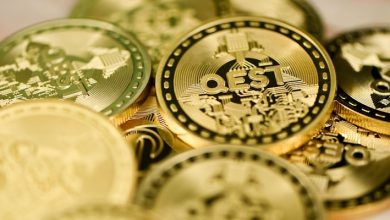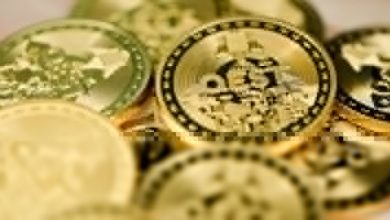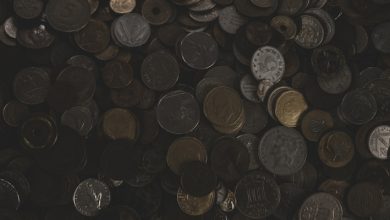The Impact of Token Burns on Crypto Prices

- Understanding the concept of token burns in the crypto market
- Analyzing the effects of token burns on supply and demand dynamics
- Exploring how token burns can influence the price volatility of cryptocurrencies
- Case studies of successful token burns and their impact on coin prices
- Discussing the potential risks and benefits of implementing token burns
- The future of token burns and their role in shaping the crypto market
Understanding the concept of token burns in the crypto market
Token burns are a common practice in the crypto market that can have a significant impact on token prices. Understanding the concept of token burns is crucial for investors looking to make informed decisions about their investments.
When a token burn occurs, a certain number of tokens are permanently removed from circulation. This reduction in the total supply of tokens can create scarcity, driving up demand and ultimately increasing the value of the remaining tokens.
Token burns are often conducted by project developers as a way to increase the value of their tokens and reward existing holders. By reducing the supply of tokens, developers can create a sense of scarcity that can lead to higher prices and increased trading volume.
Investors should pay close attention to token burns as they can be a key factor in determining the future price movements of a cryptocurrency. By understanding how token burns work and the potential impact they can have on prices, investors can make more informed decisions about when to buy, sell, or hold their tokens.
Analyzing the effects of token burns on supply and demand dynamics
Token burns have become a popular strategy in the cryptocurrency space to manage supply and demand dynamics. When a token burn occurs, a certain amount of tokens are intentionally removed from circulation, reducing the total supply. This scarcity can create a sense of urgency among investors, potentially driving up demand for the remaining tokens.
By analyzing the effects of token burns on supply and demand dynamics, we can gain insights into how these events impact crypto prices. One key effect is the potential for a decrease in supply to outpace demand, leading to a price increase. This is based on the basic economic principle of supply and demand, where scarcity tends to drive up value.
Additionally, token burns can also signal to the market that the project team is committed to increasing the value of the token. This can boost investor confidence and attract new buyers, further driving up demand. In this way, token burns can serve as a strategic tool for projects to manage their token economy and price.
Exploring how token burns can influence the price volatility of cryptocurrencies
Exploring how token burns can impact the price volatility of cryptocurrencies is crucial for investors looking to understand the dynamics of the market. Token burns, also known as coin burns, refer to the intentional destruction of a certain number of tokens or coins in circulation. This process effectively reduces the total supply of the cryptocurrency, which can have a significant effect on its price.
When a cryptocurrency project decides to burn a portion of its tokens, it signals to the market that the supply is being decreased. This reduction in supply can create scarcity, driving up demand for the remaining tokens. As a result, the price of the cryptocurrency may experience a temporary increase due to the perceived scarcity.
However, the impact of token burns on price volatility can vary depending on the overall market conditions and the specific details of the burn. Factors such as the percentage of tokens being burned, the frequency of burns, and the transparency of the burn process can all influence how the market reacts to the news of a token burn.
Case studies of successful token burns and their impact on coin prices
Several case studies have shown the positive impact that token burns can have on the prices of cryptocurrencies. By reducing the overall supply of tokens in circulation, token burns can create scarcity and drive up demand, ultimately leading to an increase in coin prices. Let’s take a look at some successful examples of token burns and their effects on crypto prices:
- Binance Coin (BNB): Binance, one of the largest cryptocurrency exchanges in the world, regularly conducts token burns of its native token, BNB. These burns involve removing a portion of BNB from circulation, effectively reducing the total supply. As a result, the scarcity of BNB increases, leading to a rise in demand and, consequently, an increase in its price.
- Basic Attention Token (BAT): The team behind the Basic Attention Token, which is integrated into the Brave browser, has also implemented token burns to boost the value of BAT. By periodically burning a portion of the tokens, they have managed to create scarcity and drive up demand for BAT, ultimately causing its price to surge.
- TRON (TRX): TRON, a blockchain platform known for its high throughput and scalability, has also utilized token burns to enhance the value of its native token, TRX. Through strategic token burns, TRON has been able to reduce the circulating supply of TRX, leading to an uptick in demand and a subsequent increase in its price.
These case studies highlight the significant impact that token burns can have on the prices of cryptocurrencies. By creating scarcity and driving up demand, token burns can be an effective strategy for increasing the value of a coin. As more projects recognize the benefits of token burns, we can expect to see this practice become more widespread in the crypto industry.
Discussing the potential risks and benefits of implementing token burns
When discussing the potential risks and benefits of implementing token burns, it is essential to consider the impact it can have on the overall supply and demand dynamics of a cryptocurrency. Token burns have the potential to reduce the total supply of a token, thereby increasing its scarcity and potentially driving up its value. This scarcity can create a sense of urgency among investors, leading to increased demand for the token.
On the other hand, token burns can also pose risks to investors. By reducing the total supply of a token, there is a possibility that the value of the token could become too volatile. This volatility could deter potential investors and lead to a decrease in overall market liquidity. Furthermore, token burns could also be perceived as a form of centralization, as the decision to burn tokens is typically made by a select group of individuals or a centralized entity.
It is important for investors to weigh the potential risks and benefits of token burns carefully before making any investment decisions. By conducting thorough research and analysis, investors can better understand how token burns may impact the price and value of a cryptocurrency in both the short and long term. Ultimately, the decision to implement token burns should align with the overall goals and objectives of the cryptocurrency project.
The future of token burns and their role in shaping the crypto market
Token burns have become a popular strategy in the crypto market to create scarcity and drive up prices. This practice involves the permanent removal of a certain number of tokens from circulation, reducing the total supply available. As a result, the remaining tokens become more valuable, which can lead to an increase in demand and ultimately push prices higher.
Looking ahead, the future of token burns is likely to play a significant role in shaping the crypto market. As more projects adopt this mechanism to manage their token supply, we can expect to see a continued impact on price dynamics. Token burns have the potential to create a sense of urgency among investors, driving speculation and trading activity.
Furthermore, token burns can also help to build a stronger community around a project. By demonstrating a commitment to increasing the value of their tokens, developers can attract more supporters and foster a sense of loyalty among existing holders. This, in turn, can lead to increased engagement and interest in the project, further driving up prices.



